#Planococcus
Explore tagged Tumblr posts
Text

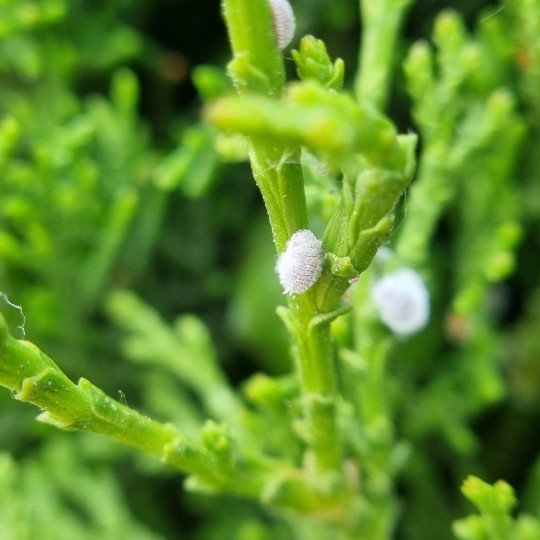
Observation – Planococcus vovae (?) ex Cupressus sempervirens
0 notes
Text
التعرف على البق الدقيقي والتخلص منه نهائياً.
البق الدقيقي هي حشرة نصفية من عائلة Pseudococcidae ، واسمها العلمي Planococcus citri. البق الدقيقي هو آفة متعددة البلعوم ، أي أنه يمكن العثور عليها في الخضروات وأشجار الفاكهة ونباتات الزينة. وكذلك الحشرات النصفية الأخرى. يتغذى عن طريق امتصاص النسغ من النباتات التي يتطفل عليها ، مما يضعف الصحة العامة للنبات وحتى يعمل كناقل لفيروسات النبات أو يسهل تطور الفطريات الانتهازية. التعرف على البق…

View On WordPress
0 notes
Text
Rệp sáp hại mãng cầu na: Biểu hiện, phòng trừ hiệu quả
Rệp sáp hại mãng cầu na có tên khoa học là Planococcus lilacinus, hay c��n được gọi là rệp bông, rệp phấn trắng với vòng đời phát triển qua các giai đoạn khác nhau.
Rệp sáp hại mãng cầu na phát triển thành dịch phổ biến trên các loại cây ăn trái như mãng cầu na, nho, chuối, xoài, các loại cây có múi.
AT Mebe là một sản phẩm trị rệp sáp hại na hiệu quả vượt trội, nằm trong danh mục trừ sâu sinh học thuộc Công ty TNHH Công Nghệ Sạch Nông Nghiệp.
Đọc thêm bài viết:
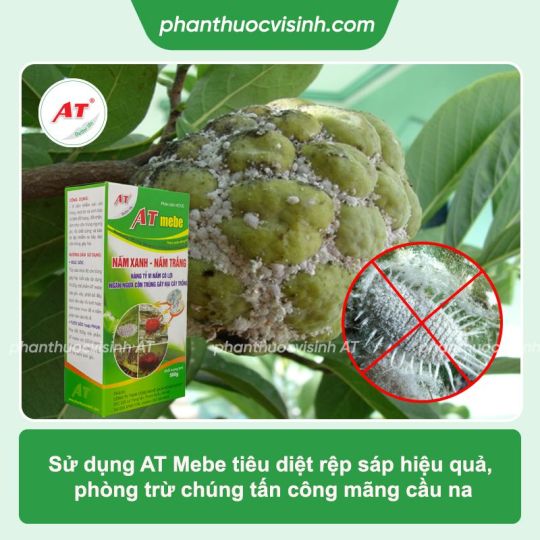
0 notes
Quote
an important foundation for deciphering terpenoid biosynthesis in mealybugs, as well as a potential source of enzymes for the biotechnological production of sustainable insect pest management products.
Identification and characterisation of Planococcus citri cis- and trans-isoprenyl diphosphate synthase genes, supported by short- and long-read transcriptome data | bioRxiv
0 notes
Text
Scale Insects
I found mealybugs on one of my plants at home and it prompted me to look at it under the microscope (in photo below). It was a mild infestation and there were mainly two sizes of these white insects. The photo below shows a female adult turned over.
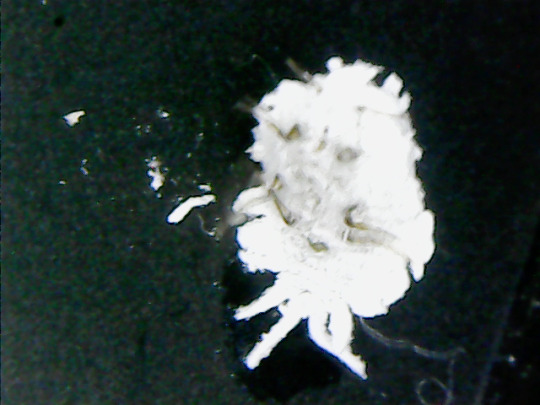
Background
Order: Hemiptera Suborder: Sternorrhyncha Superfamily: Coccoidea ~8,000 spp, > 30 families
Types of scale bugs include mealybugs (Pseudococcidae), armored scales (Diaspididae) and soft scales (Coccidae), lac insects (Kerriidae), and iceryines (Monophlebidae). They display sexual dimorphism, in which the adult females retain their nymph like features (a condition known as neotony), while the adult males possess two-wings (the other two has become vestigial) and lack functional mouthparts. Few scale insect species transmit viruses, notably on citruses, grapevines and pineapples. Natural enemies for biological control include entomopathogenic fungi, lady beetles (Coccinellidae), larval gall midges (Cecidomyiidae), wasp parasitoids (mainly Encyrtidae), and others.
Invasive species
International trade has proven to be a successful mode of dispersal considering the female’s sessile lifestyle. Reproduction modes (e.g. parthenogenesis and hermaphroditism) and a generalist diet (polyphagy) allow for further spread of scale insects.
Case studies
The Australian cottony-cushion scale, Icerya purchasi threatened the Californian citrus industry in the late nineteenth century. However, it has since been controlled by deliberate introduction of the coccinellid Rodolia cardinalis and the parasitic fly Cryptochetum iceryae (in photo below), both native to Australia.

The citrus mealybug, Planococcus citri, is a highly polyphagous and cosmopolitan species that causes damage to many crops. It is vector of virus A (GVA) and Leafroll Associated Virus 3 (GLRaV-3) (photo below) on grapevine, as well as of swollen-shoot virus disease of cacao in Ghana.

The cassava mealybug Phenacoccus manihoti was threatening the cassava crops of Africa. The release of the wasp Apoanagyrus lopezi (Hymenoptera: Encyrtidae) led to control of this pest. The introduction of parasitoid wasps on the mango mealy bug Rastrococcus invadens, and on the ink hibiscus mealybug (PHM), Maconellicoccus hirsutus were also successful. On the other hand, no successful control program for the cotton or solenopsis mealybug, Phenacoccus solenopsis, particularly in India and Pakistan, has been found. Similarly for the cycad scale, Aulacaspis yasumatsui (photo below), which is a major threat to native and ornamental cycads in the U.S.A., the Pacific, and Asia.


In the photo above: Mealy bug larvae (top) should not be mistaken for mealybugs (bottom) as they are good biocontrol agents.
https://www.researchgate.net/publication/259820840_Scale_Insects_Major_Pests_and_Management
1 note
·
View note
Text
Global Spirotramat Packaging Market Scope, Size and Forecast
Global Spirotramat Packaging Market will exhibit a growth rate of 7.00% for the forecast period of 2020-2027
Global Spirotramat Packaging Market Analysis and Insights:
Spirotetramat is an insecticide that is sprayed on the plant leaves and crops to tackle insect outbreak which might lead to destroying the crop or plant. Spirotetramat is derived from tetramic acid, used for controlling the insects in their juvenile and immature stages. Spirotetramat acts as a lipid-biosynthesis inhibitor to control the attack of aphids, scale insects, and whitefly. Spirotetramat decreases the ability of insects to reproduce and reduces the process of lipids biosynthesis. Spirotetramat is effective against problematic insects such as planococcus ficus and aphis gossypii. Spirotetramat kills the insects in the initial development stages.
Get full report here: https://www.databridgemarketresearch.com/reports/global-spirotetramat-packaging-market
Global Spirotramat Packaging Market Scope and Market Size:
On the basis of type, the spirotetramat packaging market is segmented into insecticides, pesticides, and others.
On the basis of crop, the spirotetramat packaging market is fragmented into fruits, vegetable crops, cotton, spices, cereals, nuts, hops and others.
Global Spirotramat Packaging Market Country Level Analysis:
The countries covered in the Spirotetramat Packaging market report are the U.S., Canada and Mexico in North America, Germany, France, U.K., Netherlands, Switzerland, Belgium, Russia, Italy, Spain, Turkey, Rest of Europe in Europe, China, Japan, India, South Korea, Singapore, Malaysia, Australia, Thailand, Indonesia, Philippines, Rest of Asia-Pacific (APAC) in the Asia-Pacific (APAC), Saudi Arabia, U.A.E, South Africa, Egypt, Israel, Rest of Middle East and Africa (MEA) as a part of Middle East and Africa (MEA), Brazil, Argentina and Rest of South America as part of South America..
Get Sample Report here: https://www.databridgemarketresearch.com/request-a-sample/?dbmr=global-spirotetramat-packaging-market
Major TOC of the Report:
Chapter One: Introduction
Chapter Two: Market Segmentation
Chapter Three: Market Overview
Chapter Four: Executive Summary
Chapter Five: Premium Insight
Chapter Six: COVID-19 Impact on Global Spirotetramat Packaging Market
Get TOC here: https://www.databridgemarketresearch.com/toc/?dbmr=global-spirotetramat-packaging-market
Competitive Landscape and Spirotramat Packaging Market Share Analysis:
The Spirotetramat Packaging market competitive landscape provides details by competitor. Details included are company overview, company financials, revenue generated, market potential, investment in research and development, new market initiatives, global presence, production sites and facilities, company strengths and weaknesses, product launch, clinical trials pipelines, product approvals, patents, product width and breadth, application dominance, technology lifeline curve. The above data points provided are only related to the companies’ focus related to Spirotetramat Packaging market.
Get browse related report: https://www.databridgemarketresearch.com/news/global-spirotetramat-packaging-market
Major Players:
Bayer AG
Syngenta
DuPont
Amcor plc
Bemis Company Inc.
Tetra Laval International SA.
About Us:
Data Bridge Market Research set forth itself as an unconventional and neoteric Market research and consulting firm with unparalleled level of resilience and integrated approaches. We are determined to unearth the best market opportunities and foster efficient information for your business to thrive in the market.
Contact:
Data Bridge Market Research
Tel: +1-888-387-2818
Email:
0 notes
Text
Global Spirotramat Packaging Market Analysis and Growth to 2027
Global Spirotramat Packaging Market will exhibit a growth rate of 7.00% for the forecast period of 2020-2027
Global Spirotramat Packaging Market Analysis and Insights:
Spirotetramat is an insecticide that is sprayed on the plant leaves and crops to tackle insect outbreak which might lead to destroying the crop or plant. Spirotetramat is derived from tetramic acid, used for controlling the insects in their juvenile and immature stages. Spirotetramat acts as a lipid-biosynthesis inhibitor to control the attack of aphids, scale insects, and whitefly. Spirotetramat decreases the ability of insects to reproduce and reduces the process of lipids biosynthesis. Spirotetramat is effective against problematic insects such as planococcus ficus and aphis gossypii. Spirotetramat kills the insects in the initial development stages.
Global Spirotramat Packaging Market Scope and Market Size:
On the basis of type, the spirotetramat packaging market is segmented into insecticides, pesticides, and others.
On the basis of crop, the spirotetramat packaging market is fragmented into fruits, vegetable crops, cotton, spices, cereals, nuts, hops and others.
Get full report here: https://www.databridgemarketresearch.com/reports/global-spirotetramat-packaging-market
Global Spirotramat Packaging Market Country Level Analysis:
The countries covered in the Spirotetramat Packaging market report are the U.S., Canada and Mexico in North America, Germany, France, U.K., Netherlands, Switzerland, Belgium, Russia, Italy, Spain, Turkey, Rest of Europe in Europe, China, Japan, India, South Korea, Singapore, Malaysia, Australia, Thailand, Indonesia, Philippines, Rest of Asia-Pacific (APAC) in the Asia-Pacific (APAC), Saudi Arabia, U.A.E, South Africa, Egypt, Israel, Rest of Middle East and Africa (MEA) as a part of Middle East and Africa (MEA), Brazil, Argentina and Rest of South America as part of South America..
Get Sample Report here: https://www.databridgemarketresearch.com/request-a-sample/?dbmr=global-spirotetramat-packaging-market
Major TOC of the Report:
Chapter One: Introduction
Chapter Two: Market Segmentation
Chapter Three: Market Overview
Chapter Four: Executive Summary
Chapter Five: Premium Insight
Chapter Six: COVID-19 Impact on Global Spirotetramat Packaging Market
Get TOC here: https://www.databridgemarketresearch.com/toc/?dbmr=global-spirotetramat-packaging-market
Competitive Landscape and Spirotramat Packaging Market Share Analysis:
The Spirotetramat Packaging market competitive landscape provides details by competitor. Details included are company overview, company financials, revenue generated, market potential, investment in research and development, new market initiatives, global presence, production sites and facilities, company strengths and weaknesses, product launch, clinical trials pipelines, product approvals, patents, product width and breadth, application dominance, technology lifeline curve. The above data points provided are only related to the companies’ focus related to Spirotetramat Packaging market.
Get browse related report: https://www.databridgemarketresearch.com/news/global-spirotetramat-packaging-market
Major Players:
Bayer AG
Syngenta
DuPont
Amcor plc
Bemis Company Inc.
Tetra Laval International SA.
About Us:
Data Bridge Market Research set forth itself as an unconventional and neoteric Market research and consulting firm with unparalleled level of resilience and integrated approaches. We are determined to unearth the best market opportunities and foster efficient information for your business to thrive in the market.
Contact:
Data Bridge Market Research
Tel: +1-888-387-2818
Email: [email protected]
0 notes
Text
大陸宣布消息後,蔡英文第一反應果然是甩鍋指責大陸,台網友:騙王,自我催眠!
大陸宣布將暫停台灣番荔枝和蓮霧輸入之後,蔡英文的第一反應果然是甩鍋。

蔡英文資料圖
海關總署發布通知,因檢出檢疫性有害生物,將於9月20日起暫停台灣地區番荔枝和蓮霧輸入大陸。19日晚,民進黨當局領導人蔡英文在臉書發文回應,沒有自我檢討,而是開始“甩鍋”指責大陸。對此有網友說,蔡英文這長篇大論還是“老掉牙”的“政治藉口”,批她“被禁了還不想辦法改善,自我催眠”。
蔡英文在臉書中先是宣稱,大陸“片面違反國際貿易規範”,“這種突襲手段,顯然不是為了正常的貿易考量”。她還聲稱所謂“嚴正譴責”,“一定會保護農業、力挺農民”。
接著,蔡英文還特別聯繫今年2��海關總署暫停台灣鳳梨輸入大陸一事,又扯出“澳洲(澳大利亞)紅酒和龍蝦”受到大陸干預的影響,大陸“停止核准立陶宛農產品進口許可”,並作出惡意揣測。她還宣稱面對大陸此次“片面突襲”,已經請台“農委會”主委陳吉仲“務必讓農民受到的衝擊降到最低”,“政府一定會挺農民到底”,“會循各種管道,幫農民討回公道。”
依舊是老套路,蔡英文藉機施壓國民黨,鼓吹所謂“朝野政黨”一致對外,把所謂大陸“刻意政治干預造成的市場衝擊,一起降到最低”。
這番回應,全然不顧海關總署所提及的“檢出檢疫性有害生物”的原因,全是甩鍋與“空頭支票”。
這並不令人感到意外,因為這就是民進黨和蔡英文最常用的伎倆。
有島內網友諷刺說:“這麼遲才發消息,肯定是找政治藉口太難了,剛剛看過,還是老掉牙的。”↓
有網友提醒她:“外銷東西品檢本來就要嚴格,被禁了還不想辦法改善,自我催眠喔?”↓
有網友反問“騙王”蔡英文:“討什麼公道?怎麼討公道??騙王不限釐清殘留毒素的源由,光說不練,讓科學證據數據去證明。”↓
還有網友滿是諷刺意味地提問:“民進黨的支持者們,要全力挺果農,每人每天吃18公斤水果很難嗎?”↓
海關總署動植物檢疫司發布通知,今年以來,大陸海關多次從台灣地區輸大陸番荔枝和蓮霧中檢出檢疫性有害生物——大洋臀紋粉蚧Planococcus minor。為防范植物疫情風險,依據大陸有關法律法規和標準,茲決定自2021年9月20日起暫停台灣地區番荔枝和蓮霧輸入大陸。
今年2月26日,海關總署當時也曾宣布,自3月1日起暫停台灣菠蘿(鳳梨)輸入大陸。海關總署的通知顯示,2020年以來,大陸海關多次從台灣地區輸大陸菠蘿中檢出大洋臀紋粉蚧、新菠蘿灰粉蚧、菝葜黑圓盾蚧等檢疫性有害生物。為防范植物疫情風險,依據有關法律法規和標準,決定自3月1日起暫停台灣地區菠蘿輸入大陸。
國台辦發言人馬曉光3月26日應詢時表示,此舉是正常的生物安全防範舉措,科學合理,符合大陸相關法律法規和標準。儘管如此,海關的通知還是在島內引發激烈反應,民進黨當局迅速將事情“政治化操作”,宣稱這是大陸“隨便找理由打壓台灣鳳梨”。春藥 春藥效果 春藥副作用 春藥哪裡買 春藥是什麼 春藥成分 媚藥 乖乖水 春藥坊 催情迷幻催情 外用春藥 日本春藥 RUSH 壯陽助�� 老中醫 韓國奇力片 鱷魚增大軟膏 黑馬Dark Hors 美國BIG PENIS
至於蔡英文所提及的所謂“澳洲紅酒和龍蝦”,中方也曾多次闡明過具體行動的原因。外交部也多次強調,中方一貫堅持在相互尊重、平等互利基礎上發展同其他國家的友好合作關係。我們始終認為,一個健康、穩定的中澳關係,符合兩國人民的根本利益。同時,相互尊重是各國間開展務實合作的基礎和保障。希望澳方多做有利於中澳互信與合作、符合中澳全面戰略夥伴關係精神的事,推動中澳關係早日重回正軌。
0 notes
Text
كيفية حماية نباتات حديقتك من البق الدقيقي وأضراره
كيفية حماية نباتات حديقتك من البق الدقيقي و أضراره البق الدقيقي القطني (وتسمى أيضًا كوتونيت) هي حشرة نصفية (تحت رتبة القصية القصية ) من فصيلة المكورات الكاذبة واسمها العلمي Planococcus citri . البق الدقيقي القطني هو آفة متعددة العوائل، أي أننا يمكن أن نجدها في الخضروات وأشجار الفاكهة ونباتات الزينة. وكذلك الحشرات نصفية أخرى. يتغذى عن طريق امتصاص عصارة النباتات التي يتطفل عليها، مما يضعف الصحة…

View On WordPress
#ابادة الحشرات#كيفية القضاء علي البق الدقيقي#كيفية حماية مزروعاتك من خطر البق الدقيقي#مكافحة البق الدقيقي#مكافحة الحشرات
0 notes
Text
TOP 5 thuốc trừ rệp sáp ở cà phê tốt nhất hiện nay
TOP 5 thuốc trừ rệp sáp ở cà phê tốt nhất hiện nay
Nhận diện rệp sáp ở cà phê Rệp sáp gây hại cà phê có tên khoa học: Planococcus kenyae và một số tên gọi khác: Rệp phấn trắng, rệp bông. Rệp trưởng thành cái có hình bầu dục, phủ nhiều sợi sáp trắng, trưởng thành đực không có sáp, mình thon dài, mắt to, râu và chân có nhiều lông ngắn Loại hại rễ: Thường sinh sống ở dưới đất, bám quanh rễ, chích hút rễ đồng thời tạo ra một lớp sáp quanh rễ khiến…
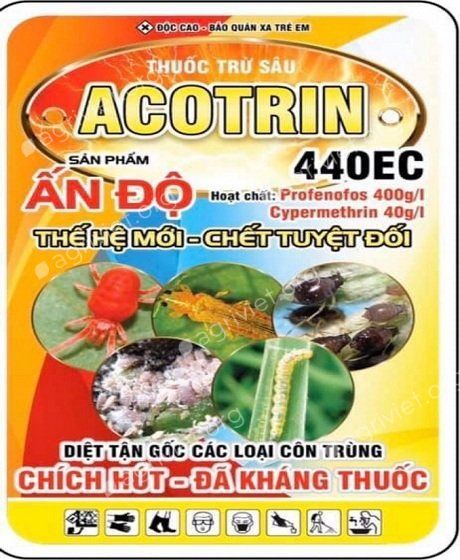
View On WordPress
0 notes
Text
Hướng dẫn cách diệt rệp sáp bằng nước rửa chén hiệu quả
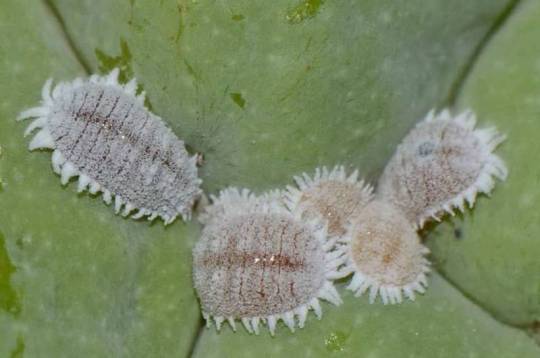
Rệp sáp là loài côn trùng gây hại vô cùng nguy hiểm cho cây trồng. Ngoài ra, một số loài rệp sáp còn có thể tấn công trực tiếp đến vật nuôi. Chính vì thế, tìm cách diệt rệp sáp hiệu quả và nhanh chóng luôn là mối quan tâm hàng đầu của mọi người. Để diệt được rệp sáp, ngoài những loại thuốc diệt rệp sáp đặc hiệu bạn hoàn toàn có thể dễ dàng loại bỏ loài côn trùng đáng ghét này triệt để với cách diệt rệp sáp bằng nước rửa chén. Vậy cách trị rệp sáp bằng nước rửa chén là như thế nào? Cùng Diệt Côn Trùng tìm hiểu trong bài viết sau nhé. Rệp sáp (tên khoa học: Planococcus citri) là một loài rệp trong họ Pseudococcidae, chúng ký sinh trên các loại cây ăn trái có múi cũng như các loại cây công nghiệp như cao su, cà phê, ca cao, hồ tiêu….Thân rệp (rệp cái) thường có phủ một lớp phấn trắng nên còn được gọi là rệp sáp trắng. Rệp sáp có sức sống rất cao và có khả năng kháng thuốc. Chúng thường sống ký sinh trên lá, hoa, quả non và hút nhựa cây để sống làm cây trồng mất chất dinh dưỡng không phát triển được. Nếu rệp di chuyển xuống đến phần rễ chúng sẽ nhanh chóng làm cây trồng chết đi không có cách cứu chữa gây ảnh hưởng nghiêm trọng đến năng suất cây trồng. Đối với các hộ gia đình việc rệp sáp tàn phá vườn rau sạch và cây ăn quả luôn là nỗi ám ảnh của nhiều chị em. Vì vậy, diệt trừ rệp sáp cứng đầu tại nhà luôn được mọi người quan tâm. #dietcontrung #dietcontrunggayhaivietnam Read the full article
0 notes
Text
Extreme Cold Environments: A Suitable Niche for Selection of Novel Psychrotrophic Microbes for Biotechnological Applications

Authored by Ajar Nath Yadav
Editorial
The microbiomes of cold environments are of particular importance in global ecology since the majority of terrestrial and aquatic ecosystems of our planet are permanently or seasonally submitted to cold temperatures. Earth is primarily a cold, marine planet with 90% of the ocean's waters being at 5°C or lower. Permafrost soils, glaciers, polar sea ice, and snow cover make up 20% of the Earth's surface environments. Microbial communities under cold habitats have been undergone the physiological adaptations to low temperature and chemical stress. Recently, these communities have attained the focus of applied research not only in terms of biotechnological prospects but also to understand the use of primitive analogues of biomolecules existed during early Earth environments [1,2]. The microbiomes of cold environments have been extensively investigated in the past few years with a focus on culture dependent and culture-independent techniques. Cold-adapted microorganisms have been reported from Antarctic sub-glacial, permanently ice-covered lakes, cloud droplets, ice cap cores from considerable depth, snow and ice glaciers [3-6]. Many novel microbes have been sort out from cold environments including Halobacterium lacusprofundi [7], Sphingobacterium antarcticus [8], Octadecabacter arcticus [9], Hymenobacter roseosalivarius [10], Cellulophaga algicola [11], Flavobacterium frigidarium [12], Oleispira antarctica [13], Flavobacterium psychrolimnae [14], Psychromonas ingrahamii [15], Exiguobacterium soli [16], Pseudomonas extremaustralis [17], Cryobacterium roopkundense [18], Sphingomonas glacialis [19], Pedobacter arcticus [20], Sphingobacterium psychroaquaticum [21], Lacinutrix jangbogonensis [22], Massilia eurypsychrophila [23], Glaciimonas frigoris [24] and Psychrobacter pocilloporae [25]. There are several reports on whole genome sequences of novel and potential psychrotrophic microbes [26,27].
The novel species of psychrotrophic microbes have been isolated worldwide and reported from different domain archaea, bacteria and fungi which included members of phylum Actinobacteria, Proteobacteria, Bacteroidetes, Basidiomycota, Firmicutes and Euryarchaeota [7-25]. Along with novel species of psychrotrophic microbes, some microbial species including Arthrobacter nicotianae, Brevundimonas terrae, Paenibacillus tylopili and Pseudomonas cedrina have been reported first time from cold deserts of NW Himalayas and exhibited multifunctional plant growth promoting (PGP) attributes at low temperatures [5]. In a study by Yadav et al. [6], the microbial species Alishewanella sp., Aurantimonas altamirensis, Bacillus baekryungensis, B. marisflavi, Desemzia incerta, Paenibacillus xylanexedens, Pontibacillus sp., Providencia sp., P. frederiksbergensis, Sinobaca beijingensis and Vibrio metschnikovii have been reported first time from high altitude and low temperature environments of Indian Himalayas. Wheat associated psychrotrophic bacteria Arthrobacter methylotrophus and Pseudomonas rhodesiae have been reported first time from wheat growing in North hills zone of India [28]. In a specific search of economically important Bacillus and Bacillus derived genera (BBDG) at low temperature, Various BBDG such as Bacillus psychrosaccharolyticus, B. amyloliquefaciens, B. altitudinis, B. Muralis, Paenibacillus tylopili, P. pabuli, P. terrae and P lautus with efficient PGP attributes have been reported first time by Yadav et al. [29].
Prospecting the cold habitats has led to the isolation of a great diversity of psychrotrophic microbiomes. The bacterialAdv Biotech & Micro 2(2): AIBM.MS.ID.555584 (2017)diversity from the cold environment could serve as a database for selection of bio-inoculants with PGP ability and could be used for improving the growth and yield of crops grown at high altitudes with prevailing low temperatures [30-33]. Psychrotrophic PGP microbes have been shown to promote plant growth either directly by biological N2-fixation; solubilization of minerals such as phosphorus, potassium and zinc; production of siderophores and plant growth hormones (Indole acetic acid and gibberellic acid) or indirectly, via production of antagonistic substances by inducing resistance against plant pathogens [29,34,35]. The psychrotrophic PGP microbes can have an impact on plant growth providing the plant with compound(s) of microbial origin for facilitating the uptake of nutrients from the environment. Psychrotrophic PGP microbes were found in several genera, including Arthrobacter, Bacillus, Brevundimonas Burkholderia, Pseudomonas, Citricoccus, Exiguobacterium, Flavobacterium, Janthinobacterium, Kocuria, Lysinibacillus, Methylobacterium, Microbacterium, Paenibacillus, Providencia and Serratia [3538]. Among these taxa, Pseudomonas and Exiguobacterium has been the best characterized for PGP at low temperatures [38,39]. There are several studies have demonstrated the benefits of PGP microbes on the growth and yield of different crops at different climates, soils, and temperatures. The use of PGP microbes improves plant growth by supplying plant nutrients, which can help sustain environmental health and soil productivity.
Psychrophilic/psychrotolerant microbes are important for many reasons, particularly because they produce cold- active enzymes. The enzymes from psychrophiles have become interesting for industrial applications, partly because of ongoing efforts to decrease energy consumption. These cold-active enzymes provide opportunities to study the adaptation of life to low temperature and the potential for biotechnological exploitation [2,40]. Most of the work that has been conducted on psychrophilic bacteria focused on cold-active enzymes such as amylase, protease, lipase, pectinase, xylanase, cellulase, P-glucosidase, p-galactosidase and chitinase [40]. Cold- active enzymes are produced by psychrophilic microbes namely, Acinetobacter, Aquaspirillium, Arthrobacter, Bacillus, Carnobacterium, Clostridium, Cytophaga, Flavobacterium, Marinomonas, Moraxella, Moritella, Paenibacillus, Planococcus, Pseudoalteromonas, Pseudomonas, Psychrobacter, Shewanella, Vibrio and Xanthomonas [27,41,42]. Psychrophilic microbes can be applied for biodegradation of agro wastes at low temperatures. Shukla et al. [43], have developed psychrotrophic microbial consortium of Eupenicillium crustaceum, Paceliomyces sp., Bacillus atropheus and Bacillus sp., for its potential applications towards degradation of agri-residues and conversion to a value added product like compost for enhancing soil fertility and decreasing environmental pollution caused by burning of agro-wastes. Psychrotrophic microbes produced anti-freezing compounds (AFCs) at low temperatures [1,27]. The AFCs are useful in cryosurgery and also in the cryopreservation of isolated organs, cell lines, tissues and whole organisms. In food industry, anti-freezing proteins (AFPs) can be used to improve the quality of frozen food. Improved cold tolerance in fishes has been achieved in some cases by direct injection of AFPs and in another case by transgenic expression of an AFPs.
Go to
Conclusion
Cold-adapted microbes could be utilized for understanding adaptation at low temperatures, as they produce cold-active enzymes, fatty acids, carotenoids, cold acclimation proteins, cryoprotectants and anti-freezing proteins under extreme conditions of low temperature. Cold-active enzymes have applications in industry like those manufacturing cleaning agents or in leather processing. The other applications could be for bio-degradation of xenobiotic compounds in cold climes, food processing (bakery, cheese manufacture and fermentation) and molecular biology (heterologous gene expression). Cold- adapted microbes have attracted the attention of the scientific community due to their ability to promote plant growth and produce cold-active enzymes, with potential biotechnological applications in a broad range of industrial, agricultural and medical processes. Psychrotrophic microbes could be valuable in agriculture as bio-inoculants and biocontrol agents for low temperature habitats. The use of psychrophiles as biofertilizers, biocontrol agent and bioremediators would be of great use in agriculture under cold climatic conditions.
For more open access journals in juniper publishers please click https://juniperpublishers.com/
For more articles on Advances in Biotechnology & Microbiology Please click on https://juniperpublishers.com/aibm/
Advances in Biotechnology & Microbiology in Full text in Juniper Publishers
https://juniperpublishers.com/aibm/AIBM.MS.ID.555584.php
1 note
·
View note
Photo

Паразиты-посредники помогли пестицидам отравить безвредных насекомых.
Фермеры широко используют неоникотиноиды благодаря тому, что они эффективно действуют на нервную систему насекомых, вызывая у них паралич или смерть. В последнее время ученые получили много свидетельств того, что неоникотиноиды могут быть значимой причиной гибели не только вредителей, но и вполне полезных пчел. Инсектициды попадают в их организм вместе с пыльцой и нектаром с обработанных растений.
Теперь ученые предположили, что неоникотиноидами могут отравиться и другие насекомые. Это может происходить косвенным путем, через посредничество насекомых-паразитов — например, тли. Такие насекомые питаются соками растений, выделяя при этом относительно большое количество сладкой жидкости — медвяной пади. Ею питаются другие насекомые, некоторые из них даже создают специальные «фермы» из паразитов, вступая с ними в симбиоз. Если такой паразит питается соками растения, которое опылили неоникотиноидом, то это вещество может попасть и в падь и, впоследствии, в организмы поедающих их насекомых.
Пчелы, поедающие медвяную падь с цитрусовыхAlejandro Tena
Чтобы проверить эту гипотезу, ученые заразили молодые деревья, клементины (гибрид мандарина и апельсина-королька) цитрусовым червецом (Planococcus citri). В экспериментальной группе было 45 растений, в контрольной — 27. Через месяц после этого треть экспериментальных деревьев опрыскали неоникотиноидами, еще треть обработали, внеся инсектицид в почву, а оставшиеся опрыскали обычной дистиллированной водой. Контрольную группу из 27 растений также поливали дистиллированной водой. Еще через месяц со всех червецов в течение нескольких дней собирали медвяную падь.
Затем этой падью накормили две группы насекомых, которые в природе также любят ею полакомиться – мух-журчалок (Sphaerophoria rueppellii) и паразитических наездников Anagyrus pseudococci.
После этого ученые проверили, сколько насекомых осталось в живых через три дня после кормления медвяной падью как с обработанных, так и с необработанных деревьев. Оказалось, что в группе, где неоникотиноиды вносили в почву, умерло 69% мух. В контрольной же группе погибло лишь около 14% особей. В группе, где неоникотиноидами деревья опрыскивали, погибли абсолютно все мухи.
Читайте также: Улетают и не возвращаются. Почему исчезают пчелы и что с этим делать
Смертность среди наездников в среднем составила около двух третей — 57% в группе, где пестициды вносили в почву, и 60,1% там, где деревья опрыскивали. В контрольной группе погибло всего 6,1% насекомых. Ученые делают вывод, что журчалки более уязвимы для пестицидов — или из-за особенностей метаболизма, или из-за того, что они едят с большей скоростью и успевают проглотить больше яда.
Также ученые с помощью жидкостной хроматографии и масс-спектрометрии выяснили химический состав медвяной пади из контрольной и экспериментальной групп. В пади с деревьев, которые обрабатывали неоникотиноидами, действительно оказалось большое количество этих веществ.
Ученые считают, что их гипотеза подтвердилась: неоникотиноиды действительно попадают из соков растений в насекомых, которые кормятся на дереве. А из медвяной пади, которую выделяют эти насекомые, пестициды попадают в организм других насекомых, способствуя их гибели. Таким образом, неоникотиноиды, вероятно, отравляют более широкий круг насекомых, чем считалось ранее, причем в него попадают вовсе не те, против кого эти вещества должны были действовать изначально. Авторы работы считают, что этот фактор нужно включить в будущие оценки риска этих пестицидов для окружающей среды.
https://ift.tt/33dGwh9
0 notes
Text
Isagro Farm
🍀🍀🍀 Contattaci per avere maggiori informazioni!!! . . . #ilmeglioperletuecolture #risultatisulcampo #agricolturaitaliana #bio #traptest #isagro #vigneti #uva #vino ARRIVANO I VIGNETI EROICI E STORICI Firmato dalla Ministra Teresa Bellanova, di concerto con i Ministri Dario Franceschini (Cultura) e Sergio Costa (Ambiente), il Testo Unico del Vino dove, in base all'articolo 7 comma 3, la vite e i territori viticoli vengono considerati patrimonio culturale Diventa finalmente concreto il percorso atteso da tempo perché i viticoltori interessati possano presentare alle Regioni di competenza le domande per il riconoscimento dei vigneti storici o eroici. Che cos’è un vigneto eroico? Come indica il Decreto, si definiscono eroici i vigneti che "ricadono in aree soggette a rischio idrogeologico, o situati in aree dove le condizioni orografiche creano impedimenti alla meccanizzazione, in zone di particolare pregio paesaggistico e ambientale, nonché i vigneti situati nelle piccole isole". Sono considerati viceversa storici "quei vigneti la cui presenza, segnalata in una determinata superficie/particella, è antecedente il 1960". Vigneti la cui coltivazione è caratterizzata dall'impiego di pratiche e tecniche tradizionali "legate agli ambienti fisici e climatici locali, che mostrano forti legami con i sistemi sociali ed economici". Nei cinque articoli la norma, accanto alla definizione, affronta e definisce i criteri per l'individuazione dei vigneti storici ed eroici, e quelli per la definizione delle tipologie degli interventi. Ad esempio, fatte salve le aree già individuate dai piani paesaggistici regionali, i vigneti eroici devono possedere almeno un requisito tra: pendenza del terreno superiore al 30%; altitudine media superiore a 500 metri sopra il livello del mare, esclusi quelli situati su un altopiano; sistemazione degli impianti su terrazze e gradoni; viticoltura delle piccole isole. Che cos’è un vigneto storico? Per quanto riguarda i vigneti storici, sono individuati o dall'utilizzo di forme di coltivazione tradizionali legate al luogo di produzione, o per la presenza di "sistemazioni idrauliche-agrarie storiche o di particolare pregio paesaggistico". Sono altresì considerati storici i vigneti dei paesaggi iscritti nel Registro nazionale dei paesaggi rurali di interesse storico, purché la viticultura costituisca la ragione dell'iscrizione e il vigneto costituisca la ragione principale che ne ha giustificato l'inserimento; quelli che afferiscono a territori che hanno ottenuto il riconoscimento di eccezionale valore universale dall'Unesco e il criterio di iscrizione nella lista è dovuto esclusivamente o in modo complementare alla viticoltura; quelli che ricadono in aree tutelate dalle leggi regionali o individuate dai piani paesaggistici per la tutela di specifici territori vitivinicoli. «Da oggi finalmente possiamo contare su una legge che individua, sostiene e valorizza queste particolari e delicate categorie di vigneto e dunque i vignaioli e tutti coloro che ritenendolo un patrimonio di straordinaria importanza sotto il profilo storico, ambientale, produttivo, culturale, economico, lavorano per tutelarlo, preservarlo, consegnarlo alle muove generazioni», dice la Ministra Teresa Bellanova. «Questi cultori del nostro patrimonio ambientale, questi produttori potranno contare anche su specifiche risorse e mettere in campo interventi finalizzati alla valorizzazione e promozione delle produzioni da viticoltura eroica o storica anche attraverso l'utilizzo di un marchio nazionale, che definiremo con un successivo provvedimento». «Soprattutto», conclude la Ministra, «anche con questo Decreto ribadiamo la rilevanza e l'eccellenza di un settore che rappresenta uno straordinario patrimonio di biodiversità e che, nei secoli, ha costruito e caratterizzato in modo evidentissimo il paesaggio italiano. Saperi e competenze che vogliamo sostenere con determinazione, tributando a questi vignaioli il nostro grazie per il lavoro e lo sforzo quotidiani a difesa dei loro vigneti e di una storia che è patrimonio di tutti». ISAGRO, da sempre difende i vigneti, attraverso una gamma completa di prodotti destinati alla cura bio-integrata. Tra i prodotti di punta: ECOFOX, bio-agrofarmaco a base di Trichoderma asperellum e Trichoderma gamsii ad azione antagonista contro il complesso del Mal dell'esca della vite; la LINEA TRAPPOLE ISAGRO con TRAPTEST, con feromone specifico per il monitoraggio di Aspilla, e ROOF, per il Bio-controllo di Planococcus ficus. (Feed generated with FetchRSS)
0 notes
Text
How life on Earth could help us find life on Mars
Jonathan O’Callaghan
In our continuing search for other life in the universe, one place has always looked promising – Mars. It is a rocky planet like Earth, orbiting the same star, and at a distance where water could have been present on the planet.
Today, however, Mars is a barren wasteland. Any water it once had on its surface hundreds of millions of years ago is long gone, while its atmosphere is a thin shell of the thicker barrier it might once have been. But could the planet have hosted life in the past, and is there a possibility that any life on Mars has survived today?
While we can’t answer those questions just yet, we are closer than ever to finding out. And with a host of new missions on the horizon, fresh clues are beginning to emerge.
Deserts
On Earth, life survives in a huge range of locations, from the deserts of the Sahara to the frozen glaciers of Antarctica. The surface of Mars today bears similarities to some of these locations so if we can find life in these places on Earth, perhaps it might be on Mars too.
Dr Dirk Schulze-Makuch from the Technical University of Berlin, Germany, coordinated the Habitability of Martian Environments (HOME) project, which studied soil collected from the Atacama Desert in South America, and examined what microbes were present – if any. The results showed life was alluringly resilient.
‘We showed that even in the hyper-arid core, there is still active microbial life there,’ said Dr Schulze-Makuch. ‘We found several survival mechanisms. For example, some microbes use water directly from the atmosphere, so they don’t need any rain.’
The team also created different soils and salty brines that mimicked some of the conditions on Mars. By introducing microbes into these Mars analogues, they could work out what sort of life might be able to survive under the surface of Mars today.
‘We know that environmental conditions on early Mars were habitable.’
Dr Alberto Fairén, Spanish Astrobiology Centre
‘We were mostly interested in extremophiles (life that survives in extreme locations on Earth),’ said Dr Schulze-Makuch. ‘For the brine experiments we used planococcus halocryophilus (a microbe that can live in very salty and very cold conditions). We found it had really high tolerance.’
While we can mimic conditions on Mars, however, we cannot exactly replicate them. The surface of Mars has much higher levels of radiation than anywhere on Earth, and there is much less water available on Mars than in the driest deserts on Earth.
‘There are a lot of microbes that astonishingly can survive under conditions that are getting very close to Mars,’ said Dr Schulze-Makuch. ‘But you would have to test on Mars to be absolutely sure.’
Researchers with the HOME project looked at extremophile microbes in the soil of South America’s Atacama Desert to understand what kind of life could survive under Mars’ surface today. Image credit – Dirk Schulze – Makuch
Water
Understanding how much water was on Mars in the past is crucial to knowing its potential habitability. We know that on Earth, nearly anywhere we find water we find life. So if Mars was once a lot more wet than it is today, the chances of habitability increase considerably.
We have found evidence for ancient water on Mars in a variety of places. NASA’s Curiosity rover may have found an ancient lake bed, while the northern hemisphere of Mars appears to have once contained a large ocean. Now scientists want to take these studies even further.
Dr Alberto Fairén from the Spanish Astrobiology Centre in Madrid, Spain, coordinates a project called MarsFirstWater. This project aims to work out just how much water might have been on Mars in its first billion years, whether this was liquid water or ice, how long it was there for, and where it was.
Using data from past, present, and future Mars missions, both on Earth and on Mars itself – such as NASA’s upcoming Perseverance rover, set to launch in July 2020, and Europe’s Rosalind Franklin rover, planned for launch in 2022 – the project aims to reconstruct and map the surface of ancient Mars like never before.
‘Between 4.5 and 3.5 billion years ago, Mars is thought to have had an active surface hydrosphere that included glaciers, rivers, lakes, deltas, and maybe even a hemispheric ocean the size of the Mediterranean Sea,’ said Dr Fairén.
The emerging picture of early Mars, he says, suggests that its summers were similar to winters in Iceland and its winters resembled winters in the Antarctic.
Dr Fairén studies nunataks, permanent ice-free peaks found in Antarctica, as analogues for early Mars – in terms of temperature, UV radiation and the availability of liquid water – when in this cold and wet environment life had a higher chance to thrive. A diverse microbial community is found in Earth’s nunataks. Image credit – M. A. Fernández-Martínez
Stripped
A previous study from Dr Fairén, called IcyMARS, concluded that ancient Mars may have been colder than people anticipated, but still wet enough to be habitable. At some point in its history, this water was then stripped from Mars when the planet’s core cooled for unknown reasons, and its atmosphere was blown away by the solar wind.
‘As a result, Mars turned (into) the extremely cold planet it is today,’ said Dr Fairén.
MarsFirstWater will look for any biomarkers such as microbial lipids on Mars that could be evidence for life once surviving in this more habitable ancient locale. Checking the chemical processes that took place on Martian rocks, for example, could tell us how much liquid water was present, letting us work out what sort of life could have survived there. The project will also look for biomarkers in the Martian geological record that are similar to those produced by microbes on Earth.
Already the team have some early results. They have found that some microbe types found on Earth could stop water on Mars from freezing into ice due to their biological processes, while some signs of ancient life could remain in wet clays under the Martian surface today that could be studied by rovers.
The Atmosphere and Surfaces Chamber (PASC) used by the MarsFirstWater project is a vacuum chamber that can simulate conditions on Mars. Image credit – CAB
The next phase in searching for life on Mars will be piecing all of these clues together and using data from upcoming missions to look for new signs of life. ‘We already know Mars was habitable,’ said Dr Fairén. ‘The next question to answer is if it was actually inhabited.’
Perseverance and ExoMars may not be enough; a life detection mission that can sample Mars directly for signs of life may instead be needed to know for sure. But there’s little doubt that an answer to one of the greatest questions of our time is within reach.
‘We know that environmental conditions on early Mars were habitable,’ said Dr Schulze-Makuch. ‘There were lakes, oceans, it was raining. There could have been life.’
The research in this article was funded by the European Research Council. If you liked this article, please consider sharing it on social media.
Published on Horizon
source https://horizon.scienceblog.com/1338/how-life-on-earth-could-help-us-find-life-on-mars/
0 notes
Text
Cotonet en Cítricos, Planococcus citri, descripción, daños y control integrado https://t.co/BJm32tAbuG https://t.co/0EsZ1dlyrI
Cotonet en Cítricos, Planococcus citri, descripción, daños y control integrado https://t.co/BJm32tAbuG pic.twitter.com/0EsZ1dlyrI
— AgroEs.es - Agrícola (@AgroEs_es) April 8, 2020
from Twitter https://twitter.com/AgroEs_es April 08, 2020 at 10:25PM via IFTTT
0 notes